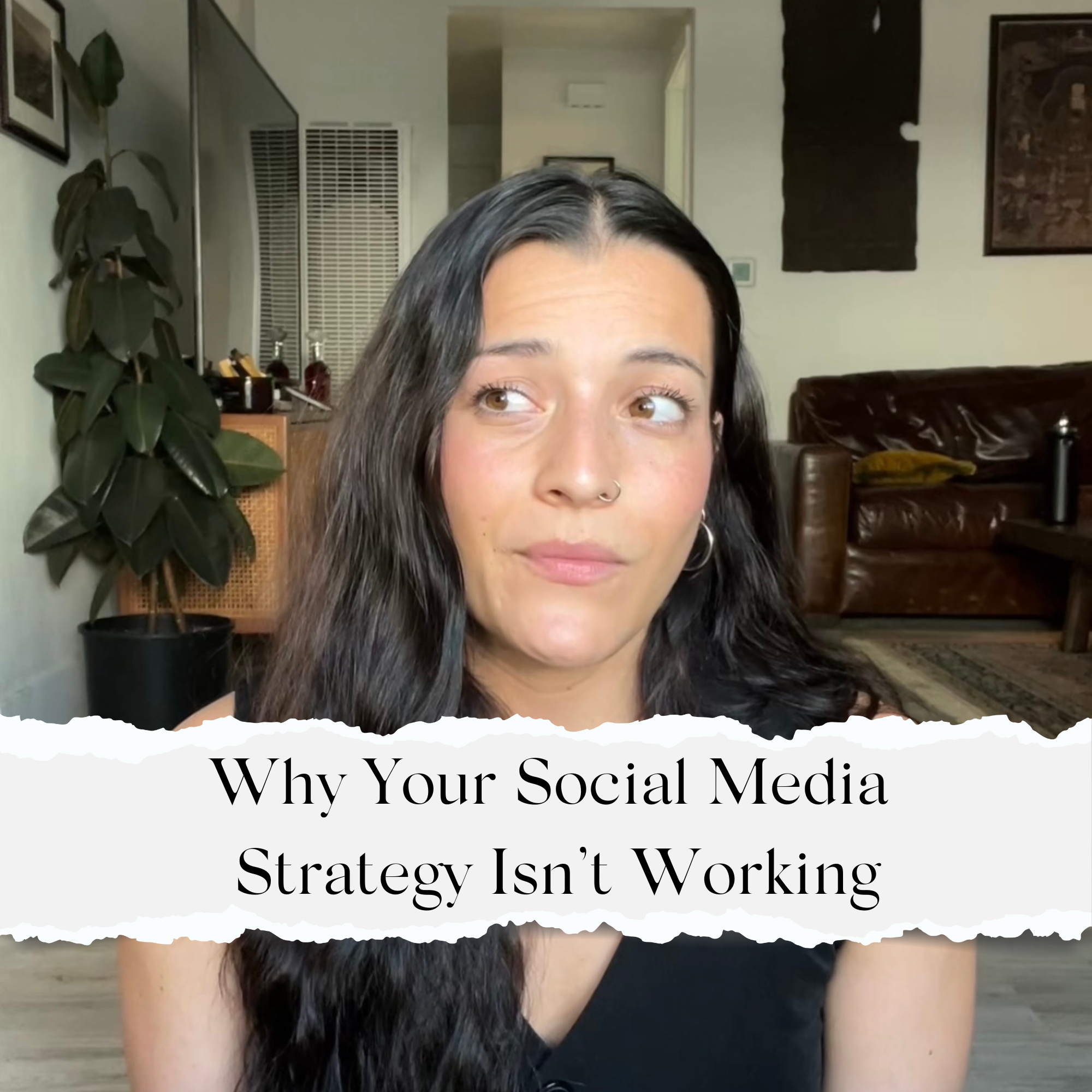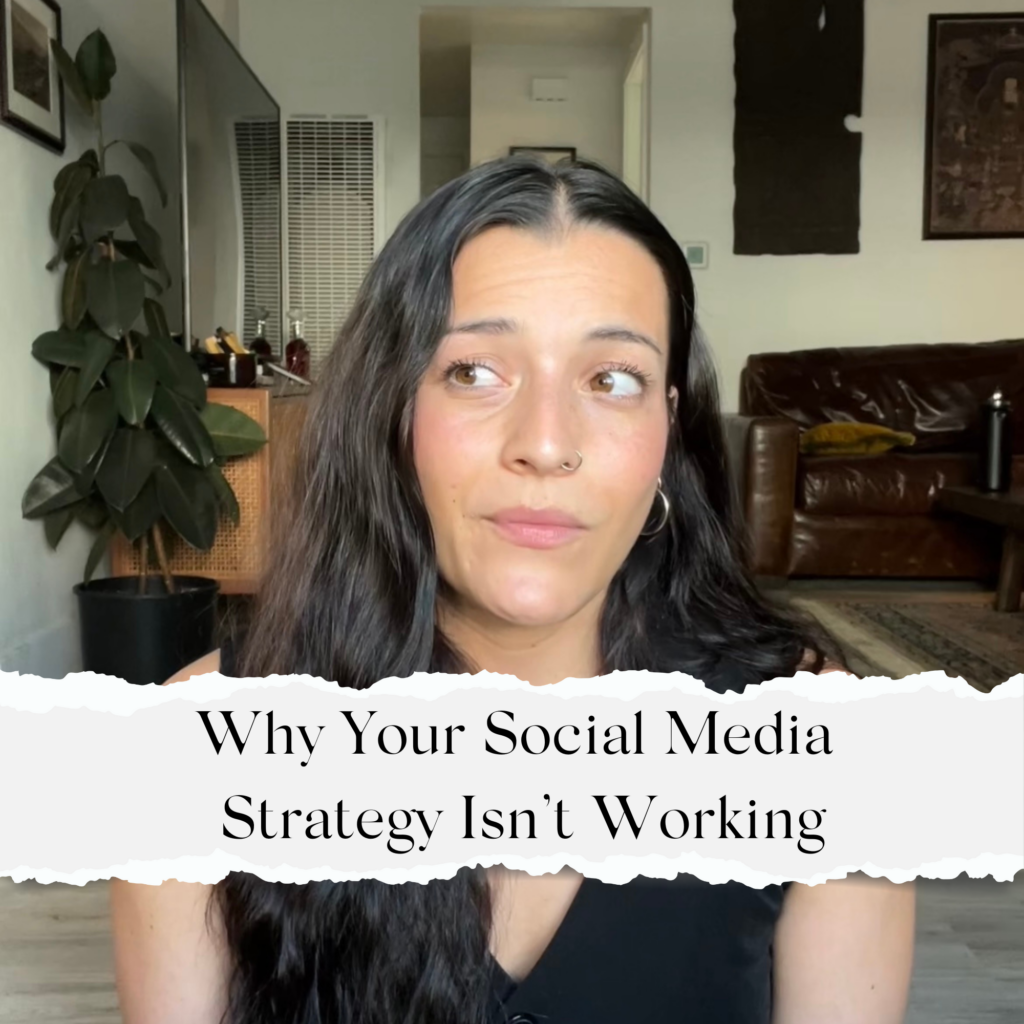
The 3 Reasons Why Your Social Media Strategy Isn’t Working: The Exact Plan You Need to Turn Up Your Engagement

In today’s digital age, Social Media (with a capital “S”) has become an indispensable tool for businesses to connect intimately with their audience members, build unparalleled brand awareness, and drive exponential conversions. However, not all social media strategies are created equal, and many businesses find themselves struggling to achieve their desired results.
As a Social Media Expert at clover PR, I’ve seen countless companies make common mistakes that hinder the effectiveness of their social media efforts. In this guide, together we’ll explore the three critical reasons why your social media strategy might not be working as you’d hoped and provide practical solutions to help you turn things around. Click here for a quick video tutorial on this topic!
Reason #1: You Don’t Know Your Target Audience Demographic
A classic mistake most businesses make as they embark on their social media journey is not having a deep understanding of their target audience. I would go as far as to argue that the majority of businesses out there make the error of assuming they know who their customers are without accurate data or insights, making their efforts often in vain. Here are a few common signs that you might not know your target audience demographic well enough:
- Low engagement: If your social media posts consistently receive low engagement in terms of likes, comments, and shares, it may be a sign that your content isn’t resonating with your audience.
- High bounce rates: If you’re directing traffic from your social media to your website, but visitors quickly leave without exploring further, it could mean that your content is not aligning with their expectations.
- Inconsistent growth: Your follower count may not be growing as expected, or you may even be losing followers over time.
To address this issue, you need to create detailed buyer personas. These are fictional representations of your ideal customers, based on real data and market research. A typical buyer persona includes demographic information such as age, gender, location, occupation, and interests, as well as their pain points and goals. Once you have these personas in place, you can tailor your content and messaging to speak directly to the needs and interests of your target audience.
Action Plan:
- Conduct audience research: Use analytics tools to gather data about your existing followers and website visitors. Look at their demographics, interests, and online behaviors.
- Create buyer personas: Develop detailed profiles for your target audience segments. Give them names, faces, and backgrounds to make them feel more real.
- Tailor your content: Craft content that addresses the specific pain points, interests, and goals of each persona. Use the right tone, style, and messaging to resonate with each segment.
- Test and iterate: Continuously monitor the performance of your content and adjust your strategy based on audience feedback and engagement metrics.
Reason #2: You’re Prioritizing Quantity Over Quality
In the world of social media, it’s easy to fall into the trap of focusing more on the quantity of content you put out into the universe over the quality. Many businesses believe that more posts and more followers equate to greater success in the algorithm. While it’s important to maintain a consistent online presence, an overemphasis on quantity can lead to shallow engagement, lower reach, and even alienate your audience. Signs that you might be prioritizing quantity over quality include:
- Frequent, generic posts: Posting multiple times a day with generic or irrelevant content that doesn’t resonate with your audience.
- Disconnected visuals: Using unrelated images, graphics, or videos that don’t captivate your audience or align with your brand’s image.
- Overloading your audience: Bombarding your followers with an overwhelming number of posts, causing them to tune out.
To improve the quality of your social media content, you need to shift your focus from quantity to relevance. Here’s how:
Action Plan:
- Create a content calendar: Plan your social media posts in advance to ensure a consistent posting schedule. Quality content requires thoughtful planning.
- Define your content strategy: Outline the types of content you will create, the messaging, and the goals you want to achieve with each post.
- Invest in visual assets: Invest in professional photography, graphic design, or video production to create eye-catching content.
- Encourage meaningful engagement: Instead of chasing likes and followers, aim for meaningful engagement with your audience. Encourage discussions, ask questions, and reply to comments to build a sense of community.
- Quality over quantity: It’s better to post less frequently with high-quality content than to overwhelm your audience with low-value posts. Focus on delivering value and creating a positive user experience.
Reason #3: Your Content Feels Inhuman
One of the biggest turn-offs for social media users is content that feels overly salesy. While your ultimate goal may be to drive sales and conversions, bombarding your audience with promotional posts can lead to disengagement and unfollows. Signs that your content feels overly salesy include:
- Excessive use of promotional language: Using too many calls to action, sales pitches, and marketing jargon in your posts.
- Lack of variety: Your social media feed consists mainly of product or service promotions, with little or no valuable or educational content.
- Low engagement: Your promotional posts receive limited likes, comments, and shares, indicating that your audience isn’t responding well to them.
To make your social media strategy more effective, you need to strike a balance between promotional and non-promotional content. Here’s how to do it:
Action Plan:
- Follow the 80/20 rule: Aim for 80% of your content to be valuable, educational, or entertaining, and 20% to be promotional. This ensures that your audience doesn’t feel overwhelmed by sales content.
- Storytelling: Use storytelling to humanize your brand and products. Share customer success stories, behind-the-scenes content, and company values to connect with your audience on a personal level.
- Educate and inform: Create content that provides value to your audience. This could be how-to guides, industry insights, or tips related to your niche.
- Use user-generated content: Encourage your customers to share their experiences with your products or services. Repost user-generated content to build trust and authenticity.
- A/B testing: Experiment with different types of content and messaging to determine what resonates best with your audience. Use A/B testing to refine your strategy.
In the fast-paced world of social media marketing, it’s easy to get caught up in the race for likes, shares, and followers. However, a successful social media strategy goes beyond the numbers. It requires a deep understanding of your target audience, a commitment to delivering quality content, and a delicate balance between promotional and non-promotional messaging.
By addressing why things may not be working, you can refocus your efforts and start achieving your social media marketing goals.
Remember that social media is an ever-evolving landscape, and staying up-to-date with the latest trends and best practices is essential for continued success. Regularly analyze your performance metrics, adapt your strategy, and engage with your audience to build a strong online presence that fosters brand loyalty and drives results.
Want to take your social media strategy to the next level? Visit wearecloverpr.com to connect with me and our other panel of marketing experts about ways to tell your story!